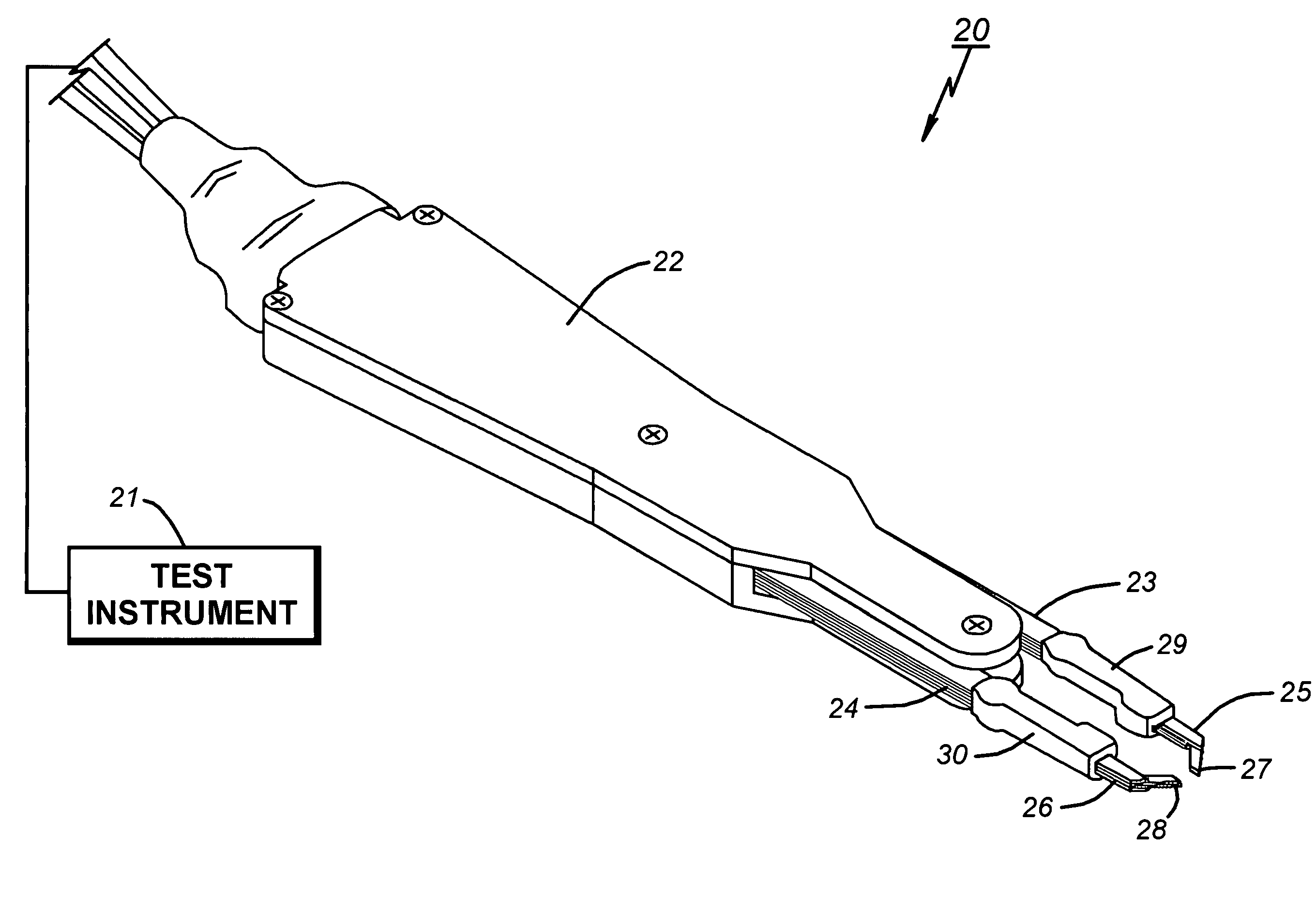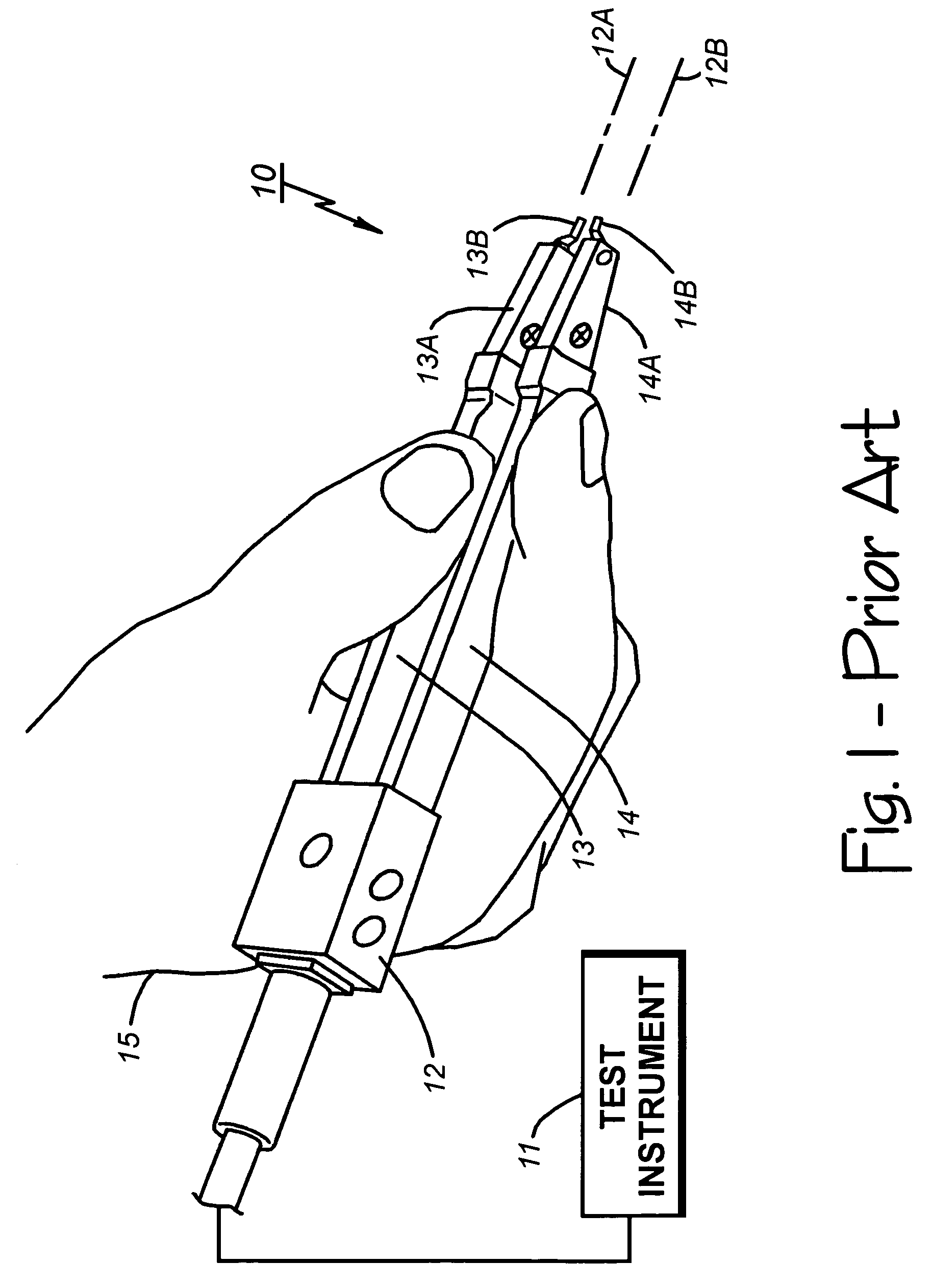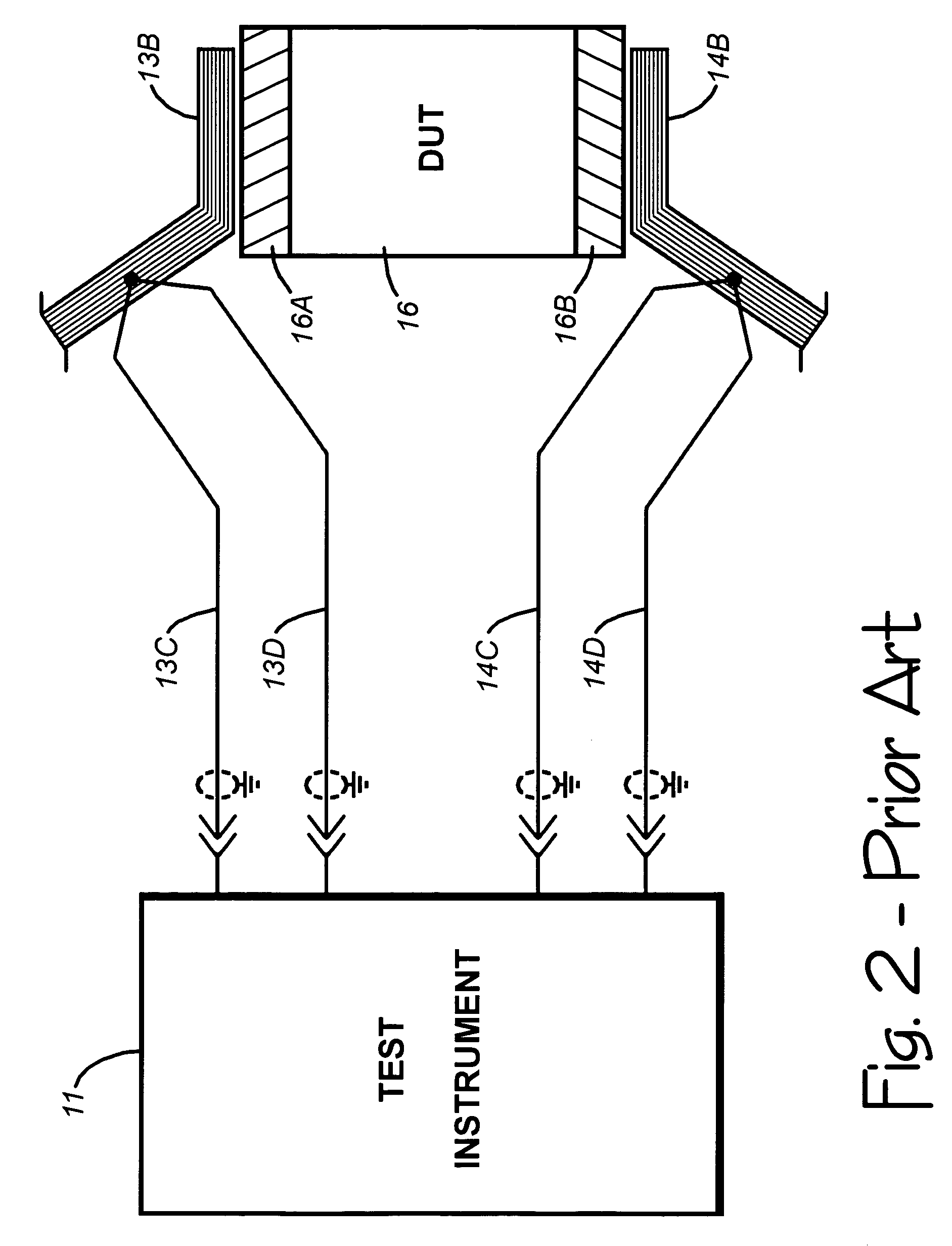Handheld electronic test probe assembly
a technology of electronic test probes and assembly parts, which is applied in the direction of electrical testing, measurement devices, instruments, etc., can solve the problems of inability to adjust, adversely affect electrical contact resistance and test, and ineffectiveness, so as to reduce the tendency to launch chips, improve ergonomics, and improve the effect of chip pickup and retention
- Summary
- Abstract
- Description
- Claims
- Application Information
AI Technical Summary
Benefits of technology
Problems solved by technology
Method used
Image
Examples
second embodiment
[0042]FIG. 11 shows a test probe assembly 100 that embodies some variations. The test probe assembly 100 is similar to the test probe assembly 20 in many respects and so only major differences are described in greater detail. For convenience, reference numerals designating parts of the test probe assembly 100 are increase by one hundred over those designating similar, corresponding, or related parts of the test probe assembly 20.
[0043]Similar in some respects to the test probe assembly 20, the test probe assembly 100 includes first and second layered test probe legs 123 and 124 that extend to first and second distal end portions 125 and 126 of the legs. The major differences is that the test probe assembly 100 includes three electrodes 127, 128, and 160, instead of just the two electrodes 27 and 28 illustrated for the test probe assembly 20. This configuration enables use of the test probe assembly 100 for testing a three-terminal DUT 116 having at least three terminals 116A, 116B, ...
PUM
 Login to View More
Login to View More Abstract
Description
Claims
Application Information
 Login to View More
Login to View More - R&D
- Intellectual Property
- Life Sciences
- Materials
- Tech Scout
- Unparalleled Data Quality
- Higher Quality Content
- 60% Fewer Hallucinations
Browse by: Latest US Patents, China's latest patents, Technical Efficacy Thesaurus, Application Domain, Technology Topic, Popular Technical Reports.
© 2025 PatSnap. All rights reserved.Legal|Privacy policy|Modern Slavery Act Transparency Statement|Sitemap|About US| Contact US: help@patsnap.com



